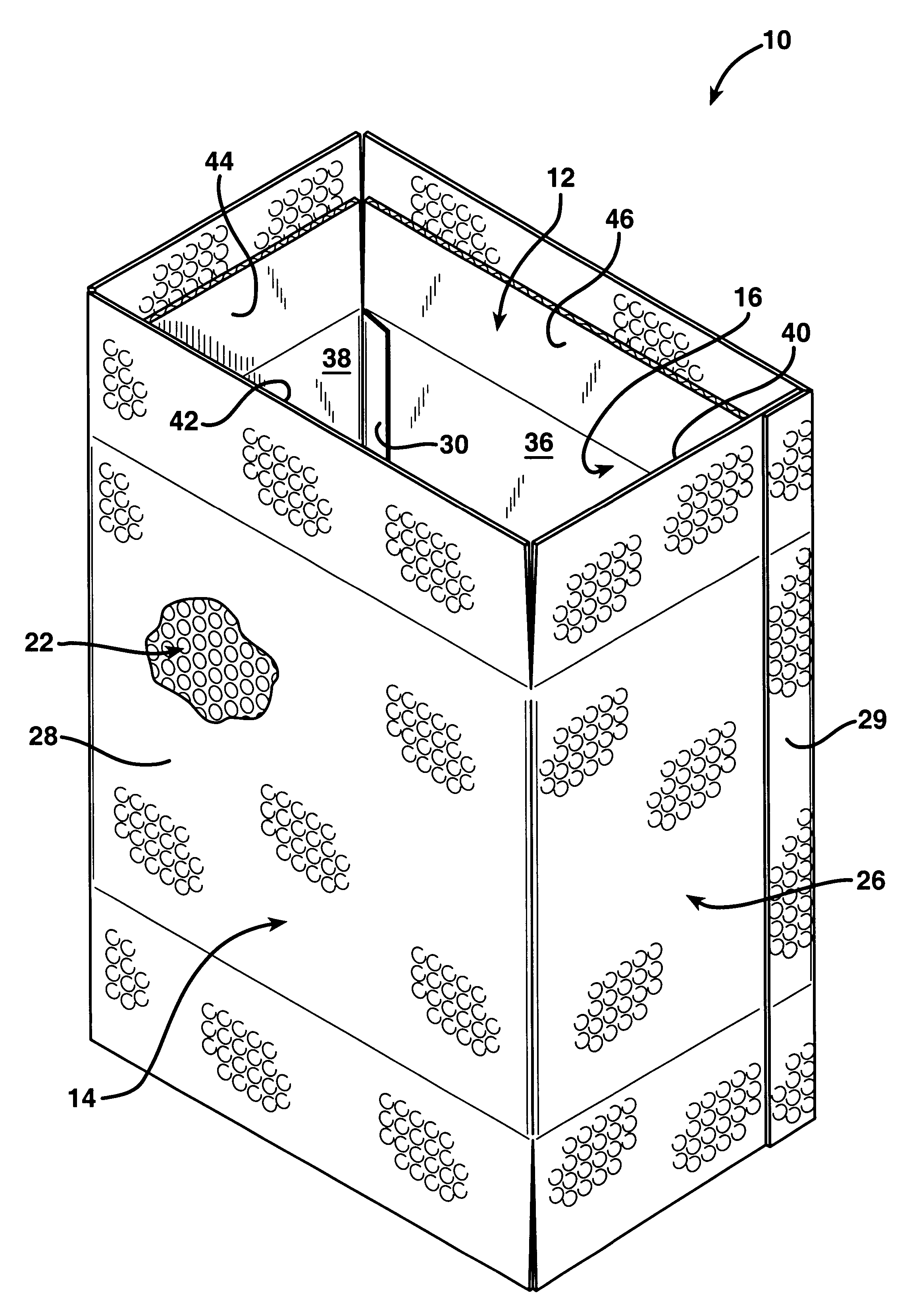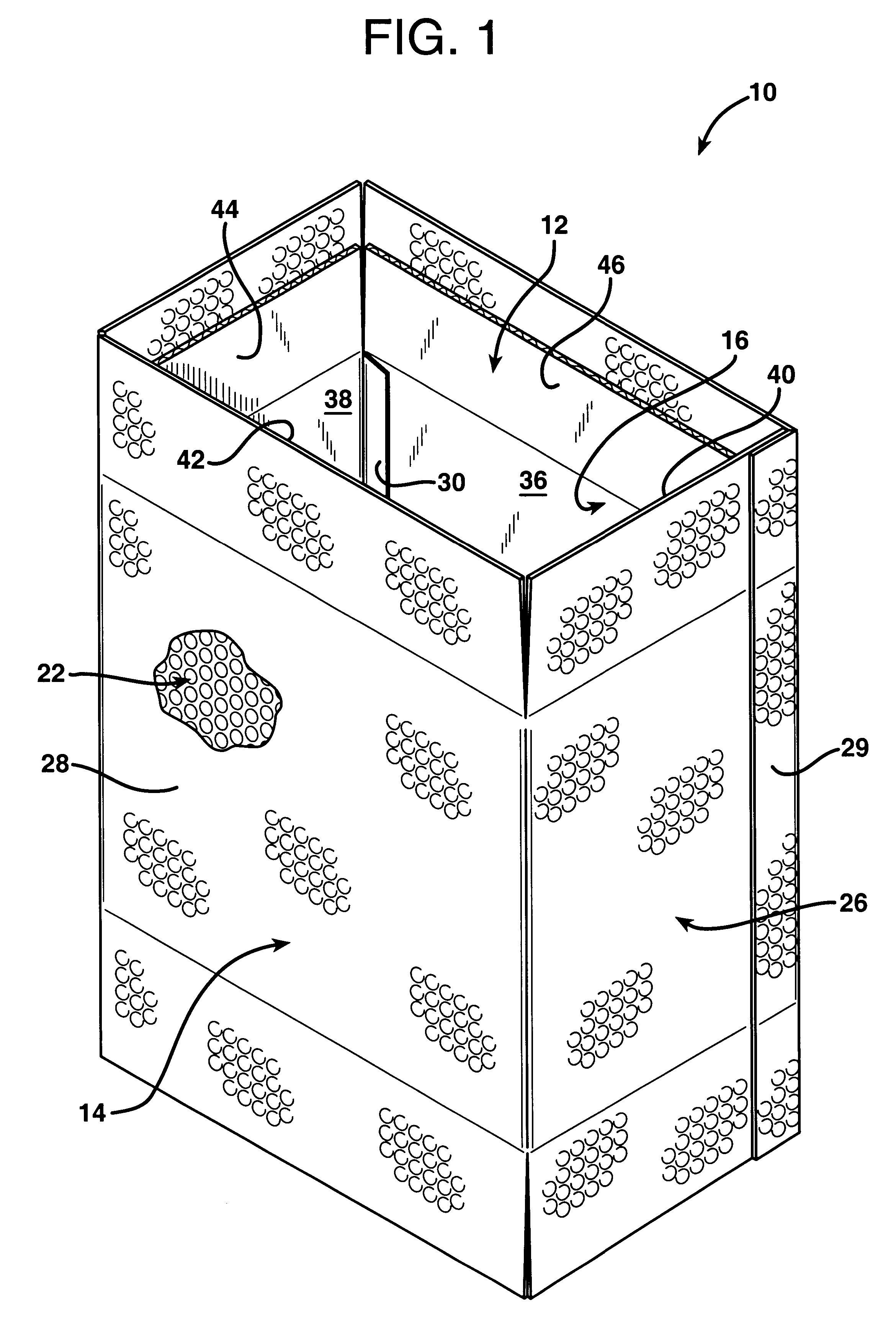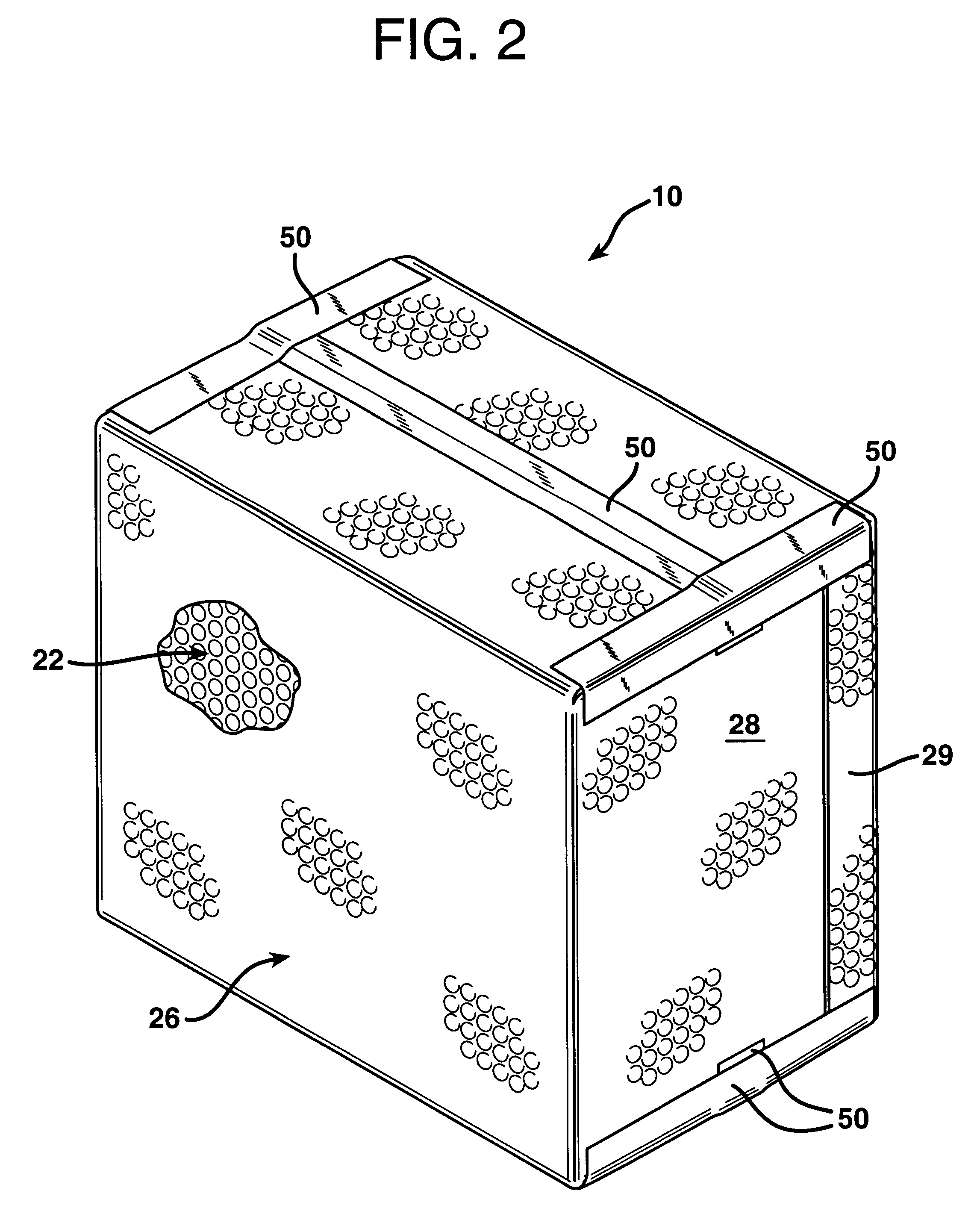Packing system for perishable goods
a perishable goods and packaging technology, applied in the field of perishable goods packaging systems, can solve the problems of reducing the quantity of perishable goods that can be packed within a limited volume of space, affecting the container, and affecting the storage
- Summary
- Abstract
- Description
- Claims
- Application Information
AI Technical Summary
Benefits of technology
Problems solved by technology
Method used
Image
Examples
Embodiment Construction
FIG. 1 illustrates a collapsible shipping container 10 the ends of which have not yet been closed. The shipping container 10 is designed to accommodate perishable food products, such as fruit. With reference to FIG. 4, the shipping container 10 is comprised of an inner stiff-walled structure 12 formed of corrugated paperboard and an outer skin 14 comprised of thermally insulating material adhesively secured to the inner walled structure 12.
The details of the several layers that form the shipping container 10 are illustrated in FIG. 8. Specifically, the inner stiff-walled structure 12 is formed throughout of corrugated paperboard that includes a flat, smooth inner sheet-like layer of paper 16, a corrugated central layer of paper 18, and a flat outer layer of paper 20. In fabricating the inner stiff-walled paperboard structure 12, the mutually facing surfaces of the two flat layers 16 and 20 are sprayed with adhesive and the corrugated layer 18 is sandwiched therebetween. The spaced c...
PUM
 Login to View More
Login to View More Abstract
Description
Claims
Application Information
 Login to View More
Login to View More - R&D
- Intellectual Property
- Life Sciences
- Materials
- Tech Scout
- Unparalleled Data Quality
- Higher Quality Content
- 60% Fewer Hallucinations
Browse by: Latest US Patents, China's latest patents, Technical Efficacy Thesaurus, Application Domain, Technology Topic, Popular Technical Reports.
© 2025 PatSnap. All rights reserved.Legal|Privacy policy|Modern Slavery Act Transparency Statement|Sitemap|About US| Contact US: help@patsnap.com



